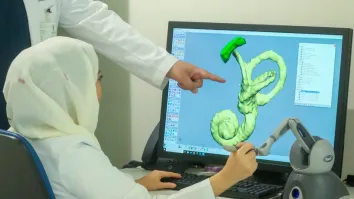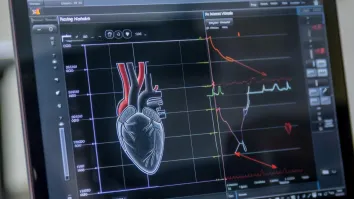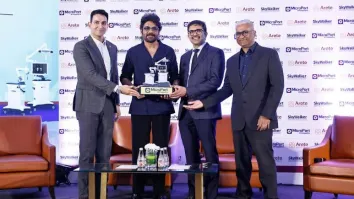Harnessing the potential of cell and gene therapies in Asia Pacific
By Ashish MahajanDeloitte Singapore Consulting Executive Director, Ashish Mahajan, discusses the potential of gene and cell therapies in Asia Pacific.
A multi-billion-dollar cell and gene therapy (CGT) revolution is currently underway. By altering a patient’s biological core – their DNA – CGTs look set to transform a myriad of therapeutic areas once thought to be the domains of the incurable.
Within Asia Pacific, we are already witnessing growing pipelines of CGT products lined up for commercial launch, and a surge of innovative solutions entering the scene. The inexorable rise of CGTs will not only transform the way we treat intractable diseases – it will also transform the entire pharmaceutical ecosystem as we know it.
Unlike conventional “one-size-fits-all” biopharma products, CGTs are designed to serve a “market of one”: in the commercial delivery of CGTs, the supply chain is built around a single patient, and each dose of the drug product is manufactured for a specific individual.
This, in turn, means that current processes being deployed for conventional biopharma products cannot be easily adapted for use. Rather, a multidisciplinary approach to designing a new CGT operating model is needed – one centred around complex, patient-centric journeys, and a holistic understanding of the stakeholder ecosystem.
Four imperatives for commercial delivery
In this article, we highlight four imperatives for the commercial delivery of CGTs in Asia Pacific, distilled from our cumulative experience supporting the commercial launch of every approved CGT product to date:
- Shift from a product-centric to a service-centric mindset
Given that CGT products are manufactured for individual patients, there is a need to ensure tight coordination between all ecosystem players involved, including but not limited to pharmaceutical companies, healthcare professionals, and regulators. To this end, a high-touch, high-visibility, and closed-loop service-centric delivery model – one with clearly defined end-to-end touchpoints, handovers, and stakeholders – is essential.
This represents a significant shift from the traditional product-centric supply chain model, where manufacturers have separate commercial and medical functions and do not coordinate for individual patients. Indeed, our experience has found that many CGT players continue to struggle to commit investments and reshape their mindsets to align with such a delivery model.
- Deploy patient-centric digital ecosystems
As noted above, the collaboration of an entire ecosystem of players is essential to the delivery of effective patient and product journeys in the context of CGTs. Bringing this concept to fruition, however, will require pharmaceutical companies to invest in the deployment of patient-centric digital ecosystems.
Broadly, these platforms should be capable of providing product assurance, ensuring alignment in key hand-offs, as well as enabling the establishment and centralisation of order transparency. However, it is likely that there would not be a single digital solution capable of managing all end-to-end CGT processes from ordering to scheduling, labelling, billing, and manufacturing.
Rather, a mix of multiple digital applications – such as manufacturing execution system (MES), customer relationship management (CRM), treatment portals, and enterprise resource planning (ERP) systems – may need to be integrated to facilitate CGT lifecycle functions.
- Collect and manage mission-critical data
Conventional drug products follow predictable production and distribution schedules and require only limited involvement from health care providers and patients. In the case of CGTs, however, where the patient is core to the manufacturing and delivery of the product, the entire ecosystem must rely heavily on the exchange and use of patient-specific data.
This paradigm shift alters not only the type of data that players must deal with, but also the fundamental nature of their workflows throughout the patient lifecycle. As any disintegration in the data architecture is likely to result in the lack of a single source of truth – and consequently, inconsistent audit trails and ineffective decision-making – a streamlining of existing data collection and management processes should be of the utmost priority.
While some players may have found that they have been able to function thus far with a disintegrated or decentralised data architecture, the reality is that the introduction of CGTs will require them to deal with such an unprecedented volume and variability of data that their existing systems can easily become overwhelmed.
- Embrace the unexpected
The stakes are high for CGT delivery: the failure to deliver a product on time could mean depriving a patient of their only remaining viable treatment option. The primary challenge, however, is that the product fulfilment process is highly variable and volatile.
Apart from supply chain disruptions, an order could be delayed for various extraneous reasons, such as weather conditions and flight cancellations. Based on our experience, the probability of having to reschedule an apheresis is almost 40 percent at cumulative order levels – a statistic that clearly underscores the importance for pharmaceutical companies to consider the long-term resiliency of their CGT operations.
As a start, CGT players should focus on building flexibility into their vein-to-vein value chains, and planning for high-impact, high-probability contingency scenarios in collaboration with ecosystem stakeholders. Continual monitoring, as well as flexible and rapid decision-making processes, will also be key to ensuring that value chains remain robust in the face of evolving circumstances.
Looking ahead
Ultimately, to deliver on the unparalleled potential of CGTs, an equally unparallel commercial delivery model is required. From manufacturing to infusion and long-term follow-up, the need to ensure the end-to-end traceability of viable cells demands an unprecedented rethink of operating models.
While each CGT product will likely require an idiosyncratic path to commercial readiness, the success of its operating model will hinge in large part on the pharmaceutical company’s ability to tolerate risk and ambiguity and develop and implement a strong digital core –one that is capable of facilitating seamless collaboration across an entire ecosystem of players and involving patients throughout the journey.
More importantly, as CGT players look towards a horizon of new unknowns, we believe that it will be a gritty willingness to “roll up one’s sleeves” and commit to prompt, data-backed decision-making, that will make or break their ability to overcome inevitable setbacks on the journey to long-term success.




















 Advertise
Advertise





